Panels with coat of arms of the Sormani family and portraits
(3) Tempera on table, cm 17 x 38
Between the fifteenth and sixteenth century, especially in Lombardy and Piedmont, in mansions and public buildings it became customary to decorate ceilings with wooden panels painted: the 'ceiling tablets' or 'formals'. The birth and spread of the use of painted tablets in architecture is already referred to the Middle Ages in Europe and in Italy in Alto Adige and Trentino, essentially in castles and stately homes. The ceilings of the large halls were made of wood, made with long beams that ran along them in the direction of the width, infused into the wall with a bearing function and equipped with shelves to relieve the weight. Small wooden joists at regular distances between beam and beam, completed the structure of the ceilings, giving rise to square or rectangular geometric frames. The space created by the meeting between the main beam and the beams perpendicular to it, will be used to insert the tablets, as a decorative element.
The painted tablets, mainly made in tempera with a lively chromatic range, represent a fundamental testimony of the artistic and cultural expressions that flourished in northern Italy, particularly in Lombardy and Piedmont, between the fourteenth and fifteenth centuries. This period, between the Gothic era and Humanism, was characterized by a strong predilection for color, which extended to the decoration of every domestic surface, transforming the interiors into real narrative spaces. The panels, therefore, were not simple decorative elements, but real and proper "repertoires of civilization", able to immortalize celebrations and scenes of daily life. Unlike other contemporary pictorial productions, the local painting on tablet, with rare exceptions, is distinguished by its predominantly secular character.


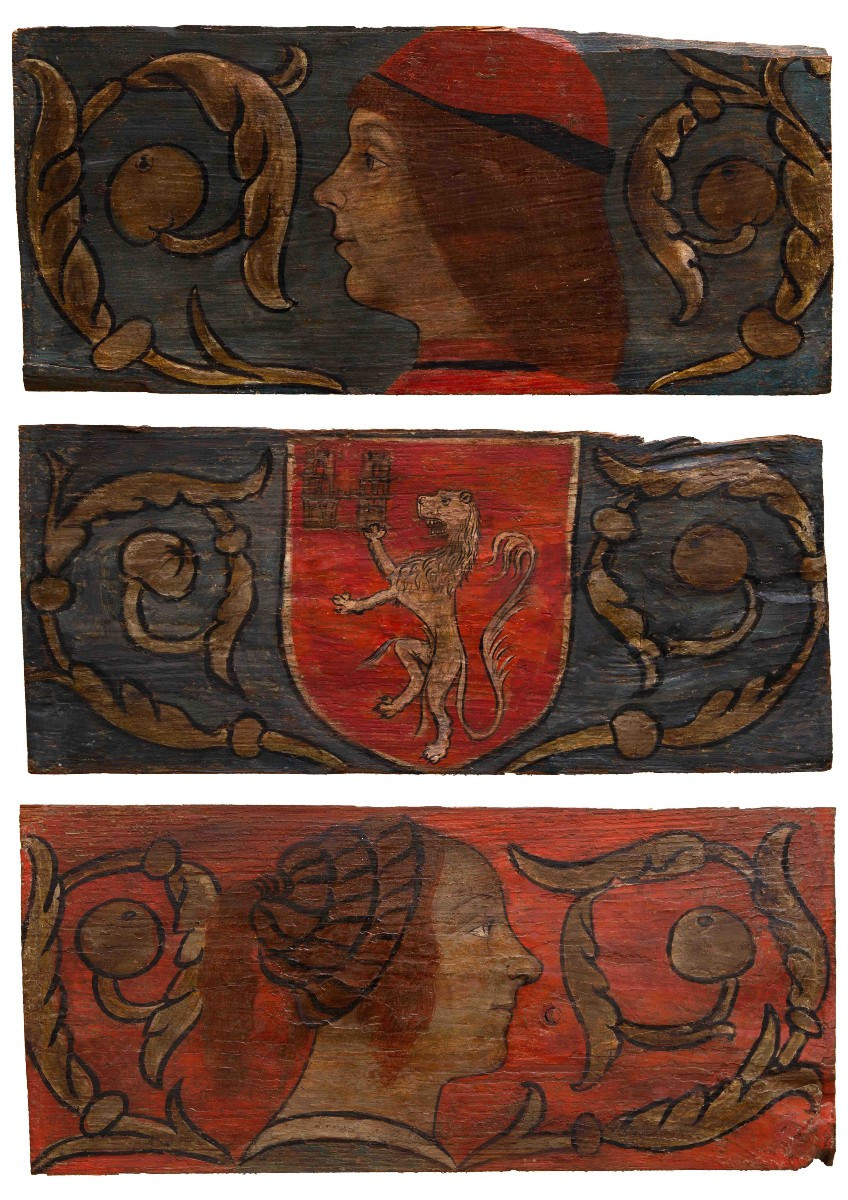



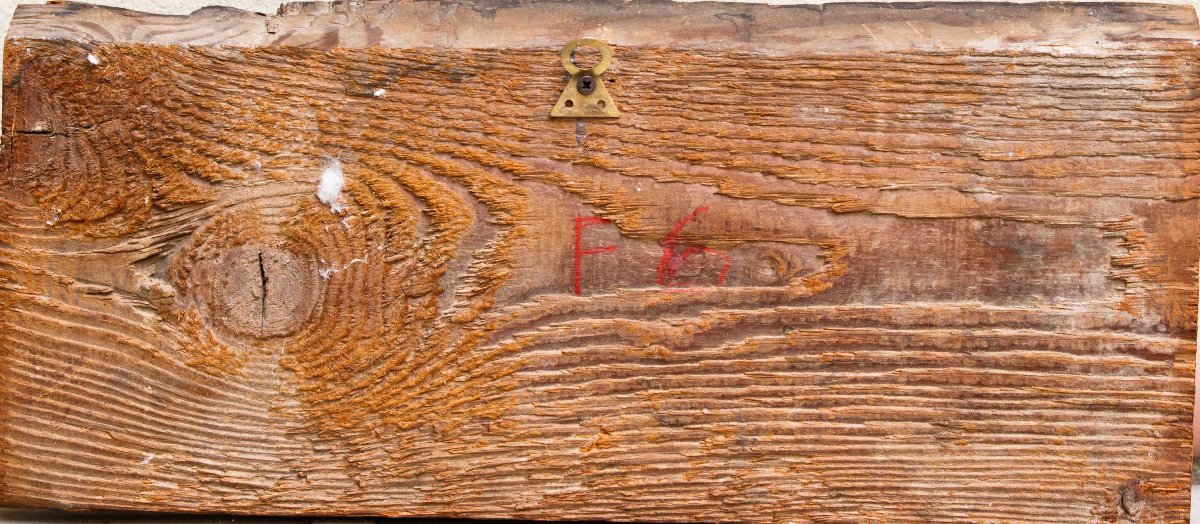

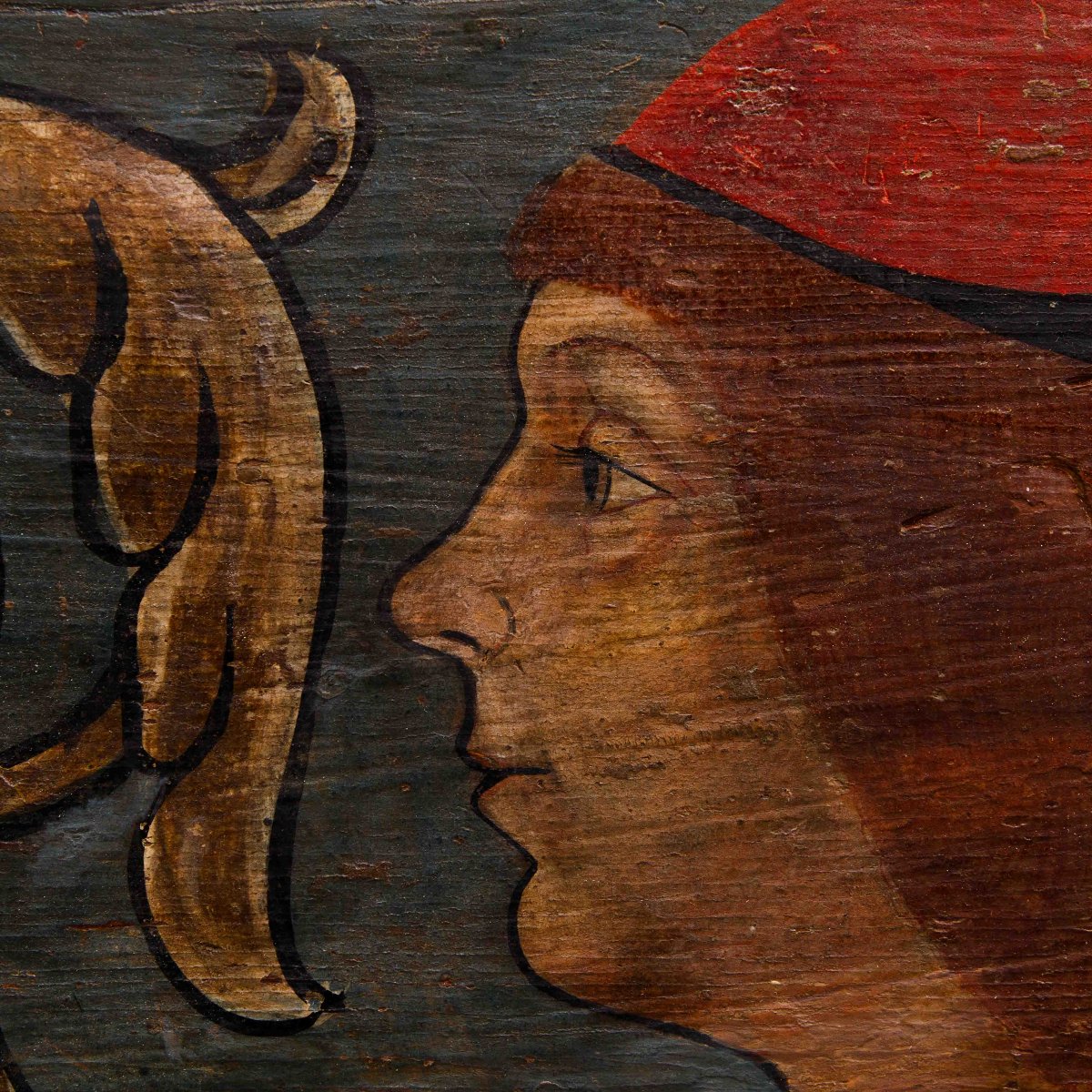
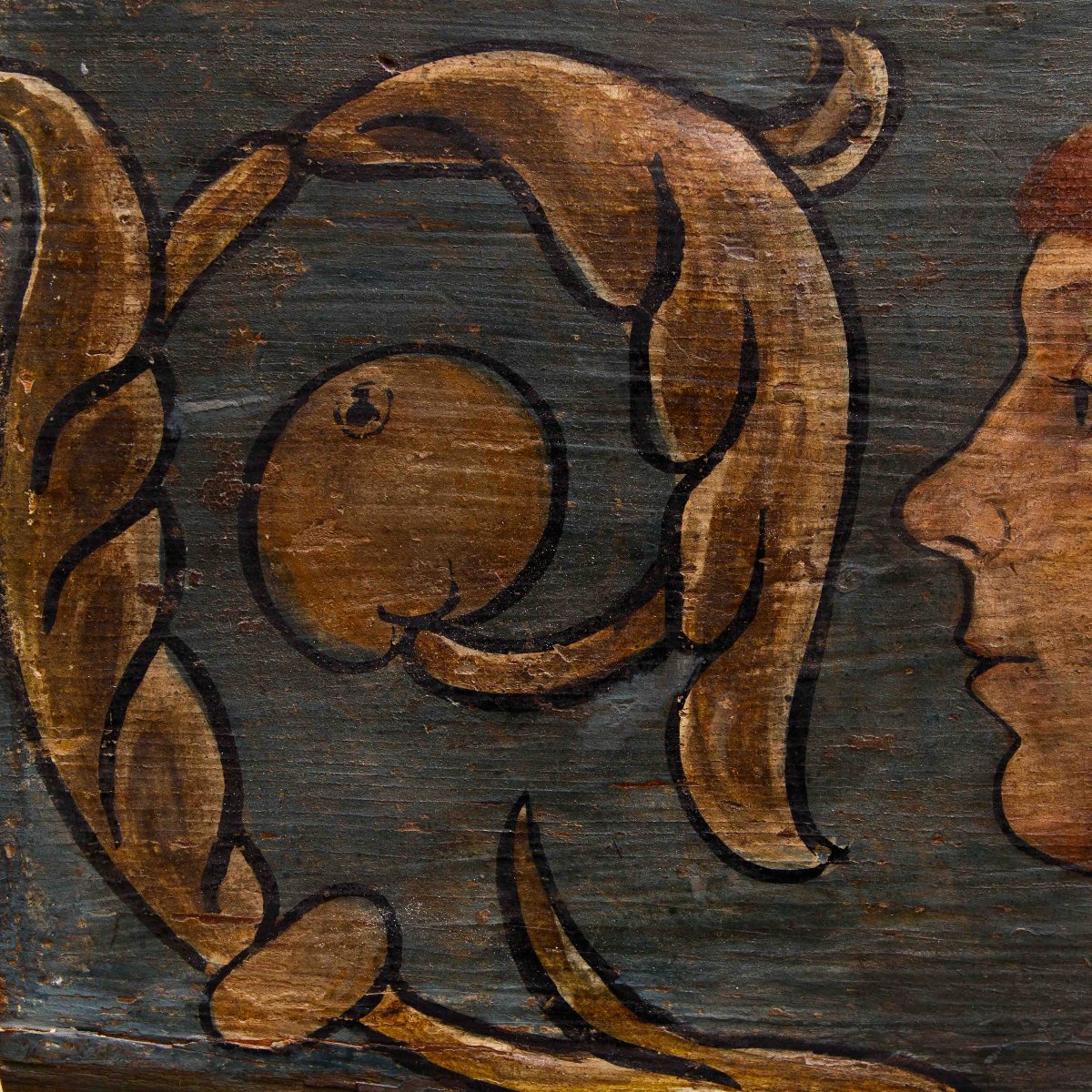


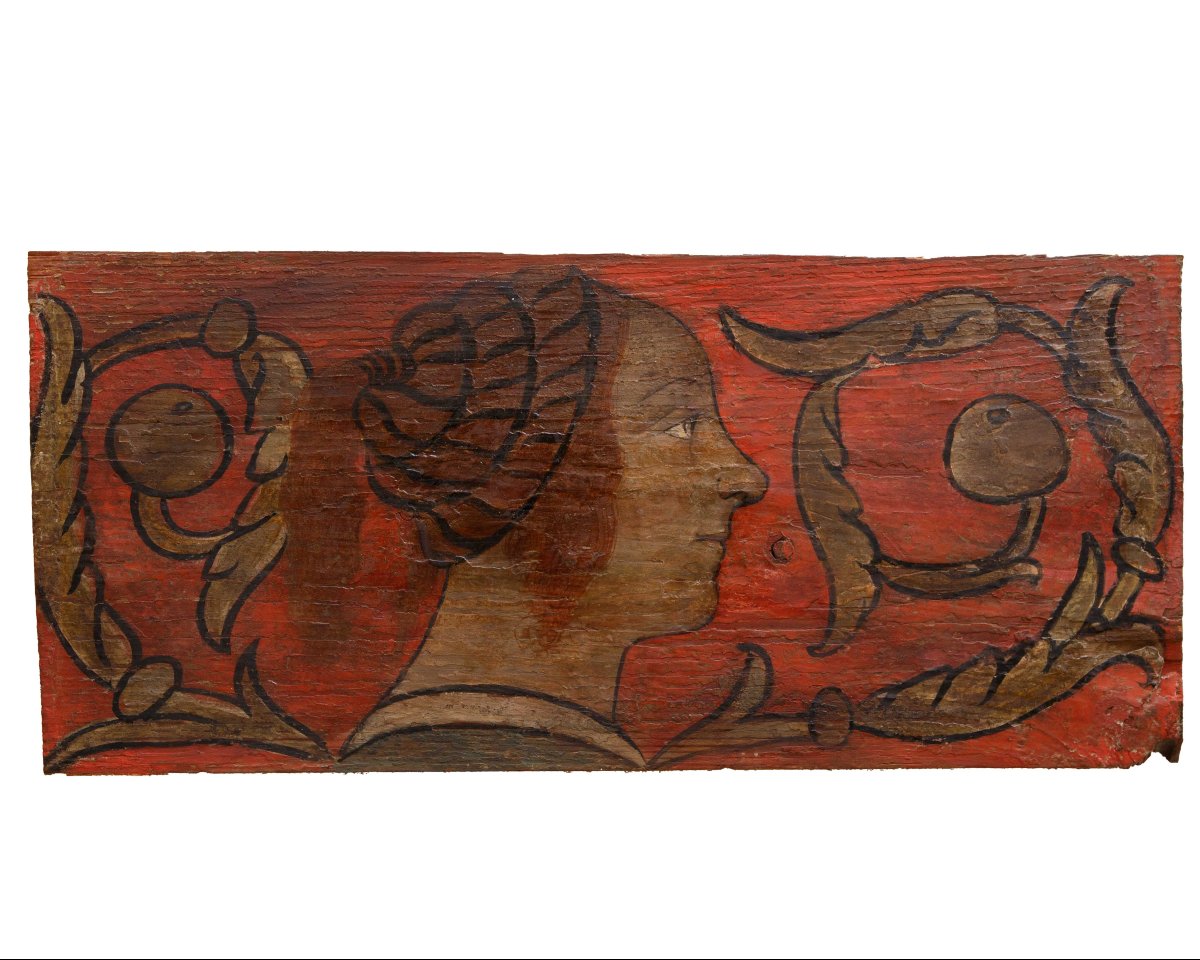
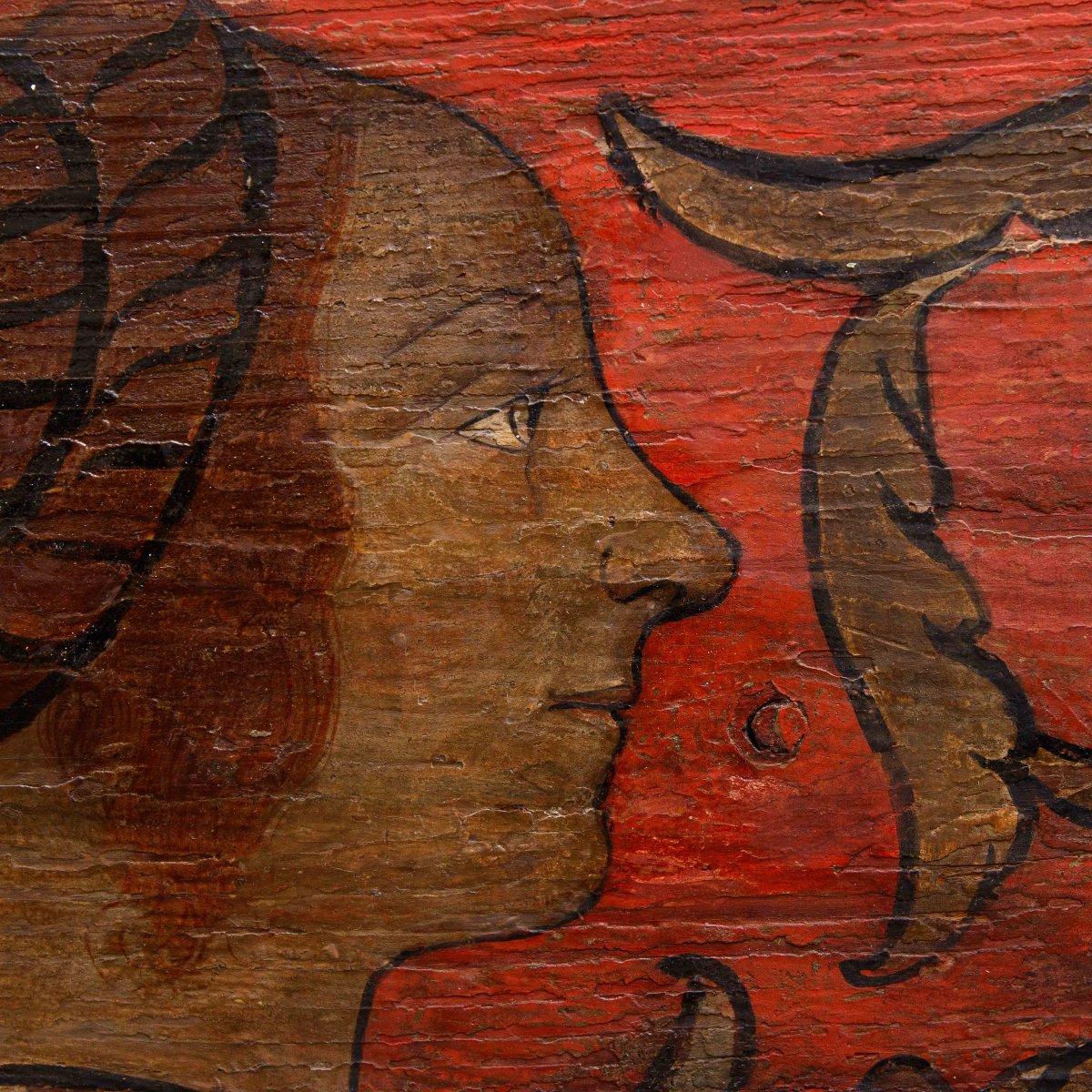


















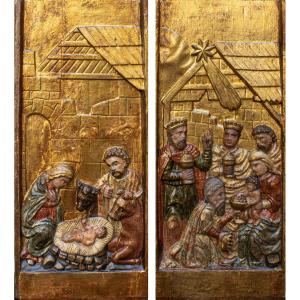












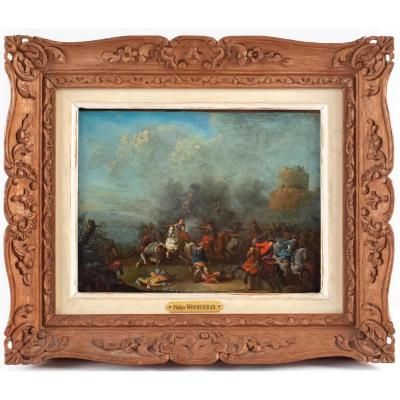




 Le Magazine de PROANTIC
Le Magazine de PROANTIC TRÉSORS Magazine
TRÉSORS Magazine Rivista Artiquariato
Rivista Artiquariato